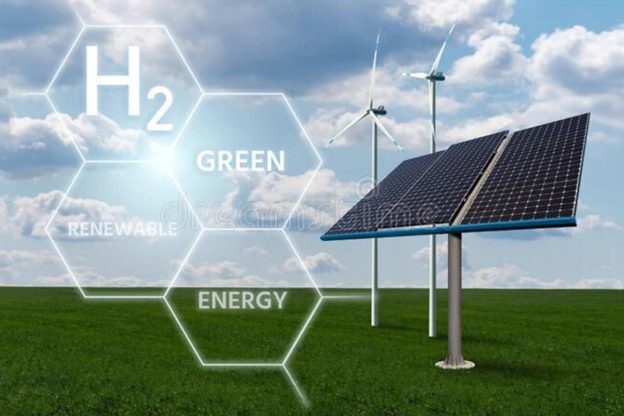India achieves target of 40 % installed electricity capacity from non- fossil fuel sources
Total installed non fossil fuel based capacity stands at 156.83 GW
Posted On: 02 DEC 2021 6:43PM by PIB Delhi
At COP 21, as part of its Nationally Determined Contributions (NDCs), India had committed to achieving 40% of its installed electricity capacity from non-fossil energy sources by 2030. The country has achieved this target in November 2021 itself. The country’s installed Renewable Energy (RE) capacity today stands at 150.05 GW while its nuclear energy based installed electricity capacity stands at 6.78 GW. This brings the total non-fossil based installed energy capacity to 156.83 GW which is 40.1% of the total installed electricity capacity of 390.8 GW In line with the Hon’ble Prime Minister’s announcement at the recently concluded CoP26, the Government is committed to achieving 500 GW of installed electricity capacity from non-fossil fuel sources by the year 2030.
https://pib.gov.in/PressReleasePage.aspx?PRID=1777364
India has achieved its target of generating 40 percent of the total installed electricity capacity from renewable energy sources far ahead of time with some help from the government’s liberal foreign investment policy and its Green Energy Corridor (GEC) projects.
India has achieved its target of generating 40 percent of the total installed electricity capacity from non-fossil energy sources, the Ministry of New and Renewable Energy said.
As part of its nationally determined contribution (NDC) under the 2015 Paris Agreement, India had pledged to
achieve 40 percent of its installed electricity capacity from non-fossil energy sources by 2030. At the climate conference COP26, Prime Minister Narendra Modi announced that the country would strive to reach net-zero emissions by 2070 and increase the share of renewable energy to 50 percent of installed capacity as well.
“The country has achieved this target in November 2021 itself,” the ministry said in a statement earlier this month.
How does it add up?
The total non-fossil based installed energy capacity of the country stood at 157.32 gigawatts (GW), which is 40.1 percent of the 392.01 GW total installed electricity capacity.
As of November 2021, India’s installed renewable energy capacity included 48.55 GW of solar power, 40.03 GW of wind power, 4.83 GW of small hydro power, 10.62 GW of bio-power and 46.51 GW of large hydro power. In addition, the country has 6.78 GW of nuclear energy based installed electricity capacity.
How was this achieved?
According to a Hindustan Times report, India ranks fourth in the world in terms of installed renewable energy capacity. India’s non-fossil fuel energy rose over 25 percent in the last seven years to 40 percent of the country’s energy mix in 2021.
India’s solar energy grew more than 18 times, while renewable energy capacity grew 1.97 times, a BusinessLine report said.
Between 2014 and 2019, renewable energy projects received investments of $64.4 billion from the private sector, BusinessLine said, quoting the REN21 Renewables 2020 Global Status Report.
The government’s liberal foreign investment policy resulted in a smooth flow of foreign capital into the sector, with the non-conventional energy sector receiving nearly $7.27 billion as FDI from the year 2014-15 to June 2021.
The government has also initiated Green Energy Corridor (GEC) projects and completed the inter-state GEC with the target capacity of 3200 circuit km (ckm) transmission lines and 17,000 MVA capacity sub-stations in 2020.
The government plans to complete the intra-state GEC with a target capacity of 9,700 ckm transmission lines and 22,600 MVA capacity sub-stations by June 2022. Till November 2021, the government had already completed setting up 8,434 ckm of intra-state transmission lines and 15,268 MVA of intra-state substations.
https://www.cnbctv18.com/environment/explained-how-india-hit-2030-non-fossil-fuel-energy-target-in-2021-11961732.htm/amp





